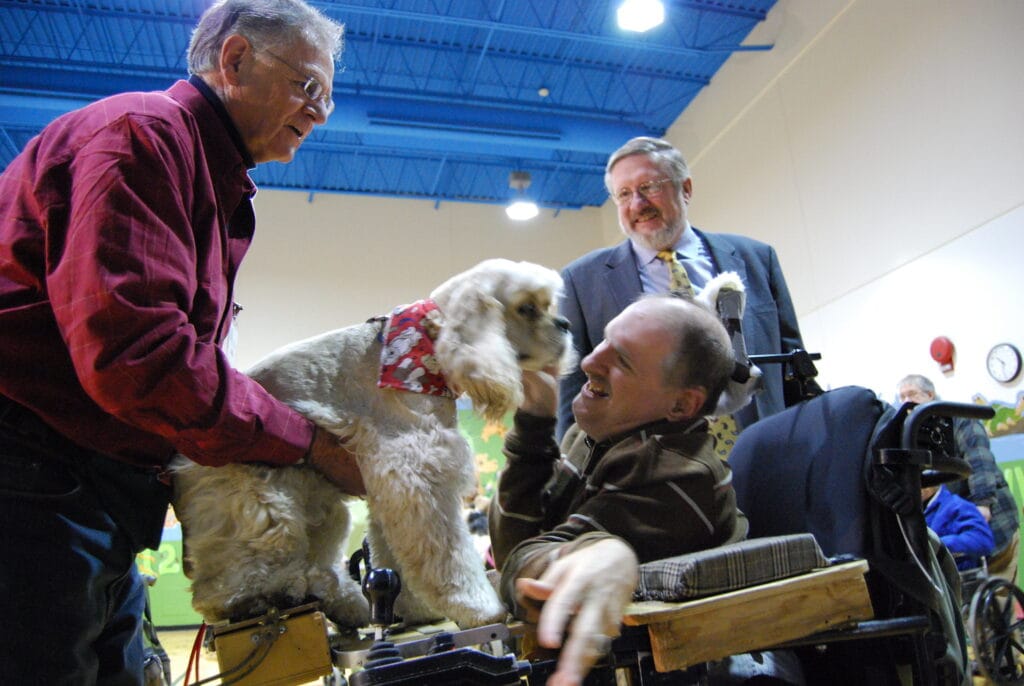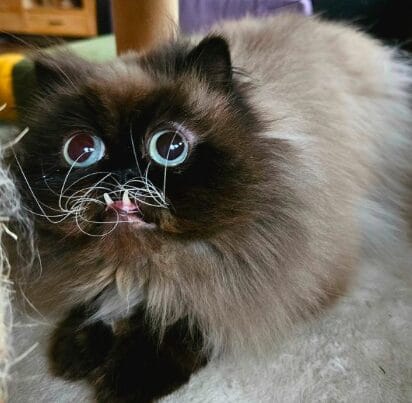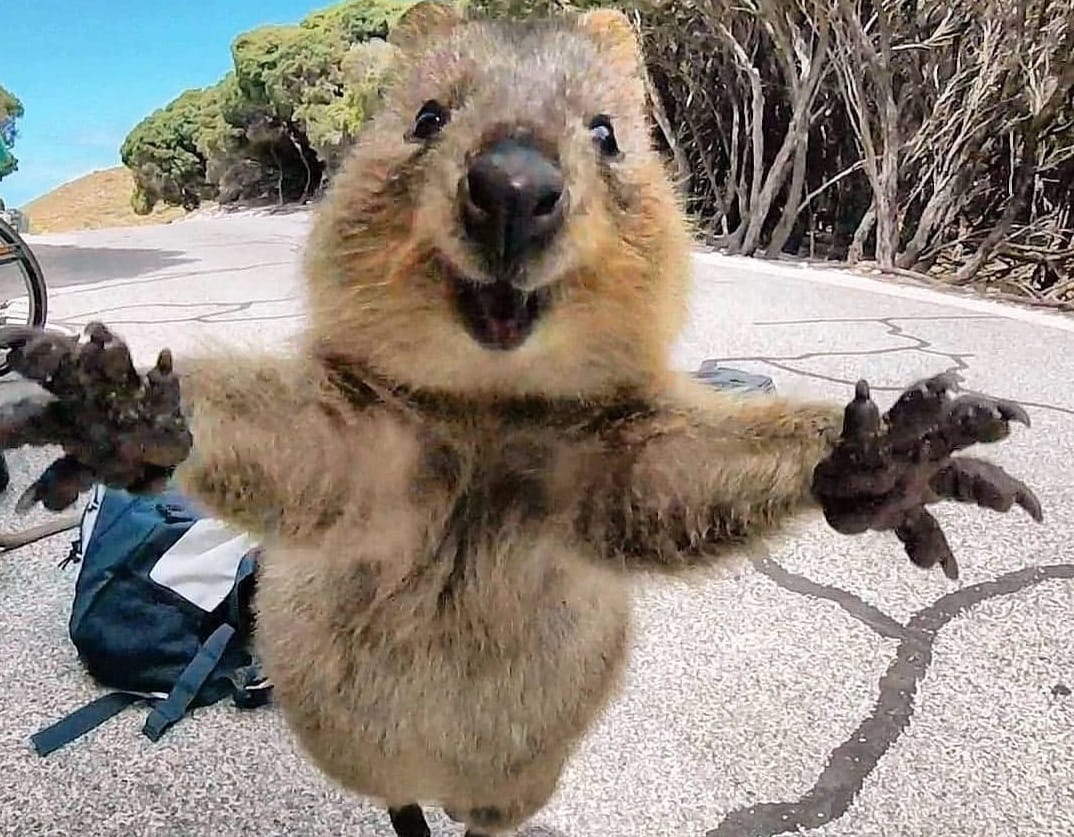Many fans of videos with funny animals explain that such a pastime helps them relax and relieve stress. We decided to check whether this belief has a scientific basis.
They write that watching videos about cats and dogs helps in dealing with stress, citing research by scientists, different Russian Media, including federal, as well as Russian-speaking media from others countries In some publications even TBCHow much does such a pastime reduce stress, namely by 50%. Bloggers add this information to collections funny videos with animals, they write about reducing stress in this way channels about health on Instagram*, media for teenagers, sitesdedicated to living nature, gardening And travel.
Animal interaction, or pet therapy, is a common practice in the treatment of many diseases. The most popular are canistherapy (communication with dogs), felinotherapy (with cats), hippotherapy (with horses) and dolphin therapy (many experts have proven it put doubtful). Also, rabbits, hamsters, meerkats, ferrets (domestic ferrets) and other animals can be used in pet therapy. Apply this method recommend with a whole range of diseases: cerebral palsy, autism, Down syndrome, PTSD, depression, dementia, schizophrenia, epilepsy. Therapy animals are popular both in children's hospitals, and in houses elderly And hospices.

However, the basis of pet therapy is physical interaction with animals: patients pet and scratch dogs and cats, ride horses, feed animals, or allow them to lie next to them. In the case of watching a video, all the kinetic components of such therapy are absent, only the image itself remains.
At the same time, the popularity of videos with animals on the Internet is enormous. In 2014, the creator of the World Wide Web, Tim Berners-Lee, in an interview on the 25th anniversary of his invention noted, that what surprises him most about the Internet is the important role cats and kittens play on it - grumpy, touching, or simply meowing touchingly. According to research ReelSEO company, in 2014, more than 2 million videos with cats were posted on YouTube, in total these videos were viewed 26 billion times. A year later wrote According to Bloomberg, cat-related content accounted for 15% of all Internet traffic.
Some cats become so popular on the Internet that they even end up in the Guinness Book of Records. In 2022, this happened to a ragdoll cat named Puff, who recognized the most popular cat on YouTube - videos with him were watched 7.5 billion times (by April 2024 this figure grew up more than three times). Another Internet star, Grumpy the cat (Grumpy Cat), 7.6 million followers on Facebook*. Among the most popular animals on the Internet is the Scottish straight-eared cat Maru from Japan, known for his love of boxes (555 million views on YouTube), a cat with chimerism named Venus (2.2 million subscribers on Instagram*), Pomeranian Boo from San Francisco (14 million subscribers on Facebook*), dwarf cat Lil Bub (2.5 million subscribers on Instagram*).

Stress is a fairly broad concept. Canadian endocrinologist Hans Selye, who introduced this term into scientific circulation, implied under it is “a nonspecific response of the body to any demand presented to it.” Now WHO defines stress as “a natural reaction of a person that focuses his attention on problems or threats that arise in everyday life.” How emphasizes British non-profit organization "Mental Health Foundation", the manifestations of stress in the emotional sense are extremely diverse - it can be anxiety, fear, anger, sadness, irritability, depression and confusion. Harvard Medical School Experts notethat stress has an impact on brain function - a person may become more forgetful, cope less well with everyday tasks and have problems concentrating. High levels of stress, expressed in increased irritability, withdrawal and hostility, influences and on our relationships with loved ones. Therefore, scientists are constantly analyzing what can help combat stress.
In 2012, a group of researchers from Hiroshima University studied the phenomenon of kawaii - the aesthetic concept of everything cute - using the example of photographs of kittens and puppies, as well as adult animals. Scientists were interested in the potential benefits of such images for improving physical and mental concentration, which is often reduced under stress. In the first experiment, volunteers first performed a coordination task - they had to carefully remove 14 small foreign fragments from a model of the human body with special tweezers, without touching certain areas. Then half of the participants received cards with pictures of kittens and puppies, and the other half with pictures of adult animals. The scientists asked the volunteers to rest while looking at these pictures and then repeat the coordination test. Those who looked at pictures of kittens and puppies performed 54% better, while the second group did 11% better.
Participants in the second experiment solved a different problem: inside a table of 4 by 10 cells, they had to count the number of F letters among the T letters and vice versa. Having dealt with one such matrix, the volunteer was shown the next one - and so on for 3 minutes. Then the scientists gave subjects pictures (either of kittens and puppies, or adult animals, or aesthetically designed food such as sushi, pasta or steak), gave them time to study the pictures, and asked them to take the test again. Scores after viewing the pictures improved by 13.2% for the group that looked at kittens and puppies, by 4.3% for those who received cards with adult animals, and by 3.2% in the case of pictures of beautiful food.
Finally, in the third experiment, the course of which was identical to the first and second, volunteers had to quickly assess which letter was in front of them: F or T - and press the corresponding button on the remote control. When repeating the task after a break to look at the pictures, the most noticeable improvement was shown by the group looking at kittens and puppies - by 15.7%. In comparison, studying cards with adult animals and beautiful food increased the results only slightly - by 1.4% and 1.2%, respectively.
In their findings, scientists noted that kawaii not only makes us happier, but also improves productivity, attentiveness and reaction speed. Cute pictures and videos, researchers suggest, can improve the quality of work of office workers and public transport drivers.
In 2018, a group of scientists from Colorado State University researched, how watching videos of cats and dogs affects students who need to learn complex material, that is, concentrate as much as possible and at the same time remember a large amount of new information. The authors of the experiment invited 113 veterinary school students as volunteers. They listened to lectures on pharmacology, in the middle of which the students were either shown a cute video about animals or not. In total, future veterinarians attended 20 lectures; they were shown videos in half of the cases. After lectures and watching videos, students rated themselves as happier, more satisfied with their studies, and having mastered the material they heard well. However, scientists also note the limitations of their findings - a break to watch other videos (for example, with calming views of nature) or physical exercise may be no less effective in such a situation.
In 2020 scientists from the University of Leeds offered watch videos of cute animals to 19 volunteers: 15 students who were worried about an exam, and four college staff who complained of high levels of stress on a daily basis. Participants in the experiment were shown funny ducklings, kittens, puppies, alpacas, tiger cubs, lion cubs, baby gorillas, as well as “the most happy animal in the world" - quokka. She's the one provided the most "significant and immediate positive" impact on volunteers. It turned out that watching videos with funny animals for half an hour reduces heart rate by 6.5%, normalizes blood pressure (from the group average of 136/88 to 115/71) and lowers the level of anxiety (by an average of 35%, and in some experiment participants - even by 50%). By the end of the session, the scientists rated all the volunteers as having healthy levels of stress. One participant relaxed so much that he almost fell asleep, despite the anxiety noted before the experiment.
However, watching videos of cute animals is not a panacea. Researchers from Indiana University in 2015 invited 6,827 volunteers took part in the experiment and said that they regularly (on average about once every one and a half days) watch videos with cats on the Internet. Scientists were interested in the emotions of these people: how exactly they feel before and after watching such videos. To find out, subjects were asked to rate the intensity of their positive and negative emotions: anxiety, irritability, sadness, guilt, optimism, happiness, satisfaction, feeling exhausted or energetic. It turned out that all negative emotions became less intense after watching the videos, while positive ones, on the contrary, intensified. However, the feeling of guilt, on average, decreased the least pronounced, and in some volunteers it even increased, which could lead to stress. Researchers explained this by saying that people associate watching cat videos with procrastination. It turned out that the more the subject liked the video, the more positive emotions suppressed negative ones, including feelings of guilt.
Thus, the available scientific evidence supports the benefits of watching videos of cute animals. Such videos calm you down, reduce stress and anxiety, and normalize your heart rate and blood pressure. However, when watching such videos, it is important to make sure that the cats, dogs or other animals are truly touching, otherwise, instead of positive emotions, you may get an increased feeling of guilt due to procrastination.
*Russian authorities think Meta Platforms Inc., which owns the social networks Facebook and Instagram, is an extremist organization; its activities in Russia are prohibited.
Cover image: social networks
If you find a spelling or grammatical error, please let us know by highlighting the error text and clicking Ctrl+Enter.






